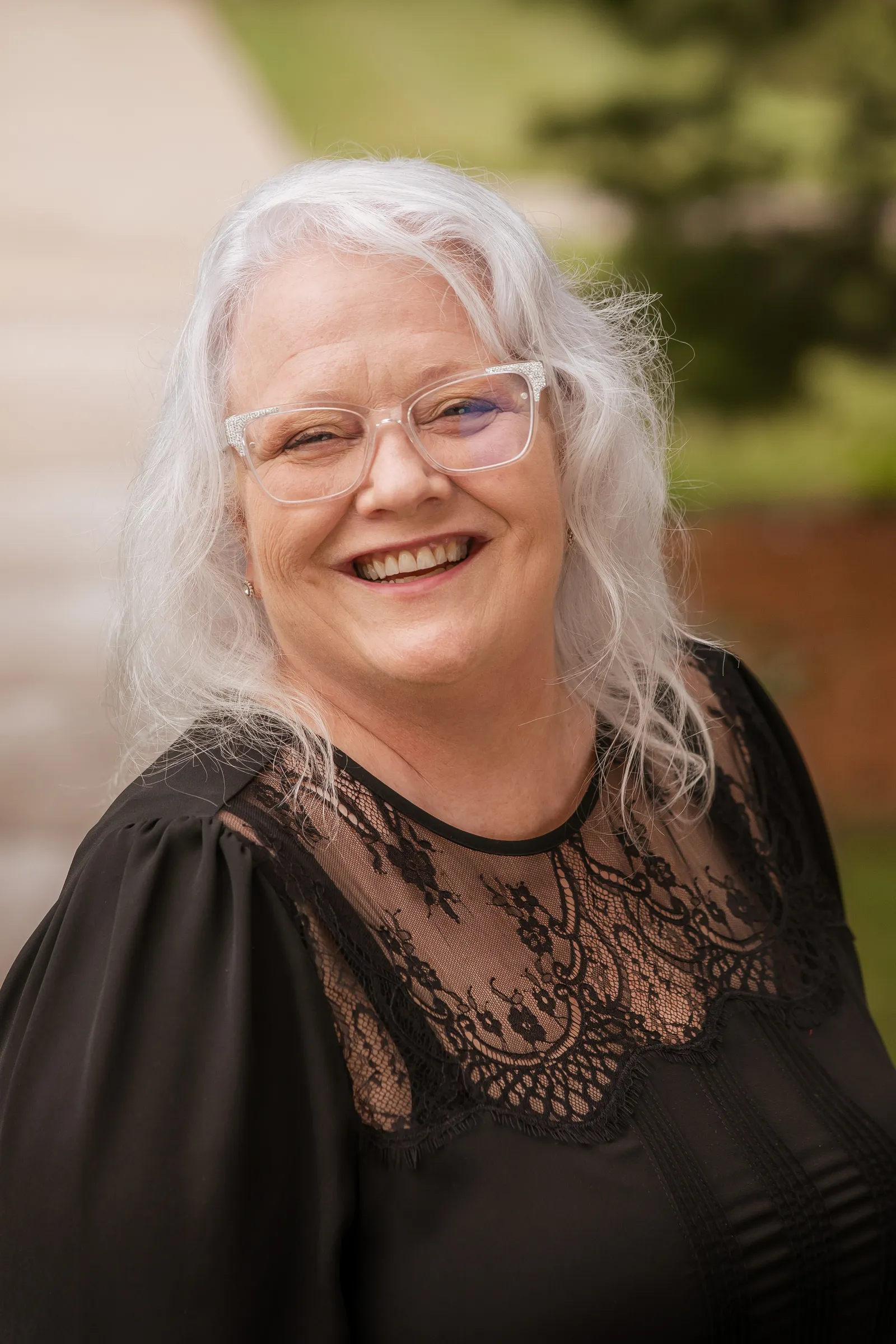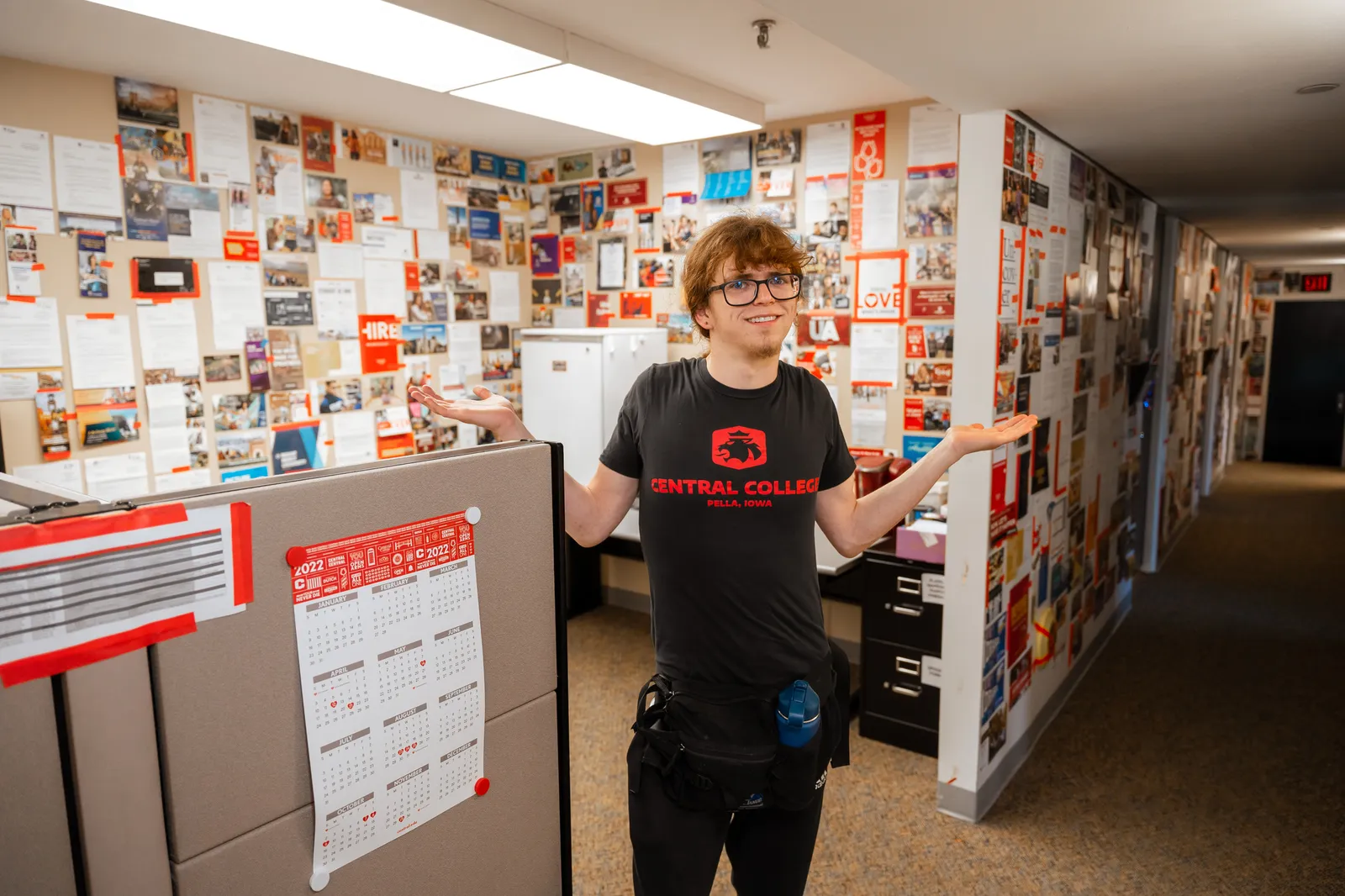Denise Lamphier is the executive director of communications and marketing at Central College in Pella, Iowa. She’s also a proud mom of a first-year college student who happens to be the owner of one yellow flying disc.
This is the second of two columns about her son's college search. The first appeared last week.

Last week I told you my son E.J. received thousands of emails and other marketing materials from 90 different colleges asking earnestly for his consideration.
He ultimately selected Central College, in Iowa.
Where I work.
That actually was a huge disadvantage for Central in recruiting him. Not only do I work here, but it’s also in a small community in Iowa, and he was a kid yearning for the big city. Four years ago, I would never have predicted he’d land on Central.
Tuition remission was a pull for him, but that was available at other colleges as well. What he tells me is he found a welcoming place with social connections that he appreciated.
That’s about customer service and experiences he had on campus once he committed to making some visits — not about the content the college sent in advance of those connections. But that content had to be good enough to get him here.
E.J. and I tracked communications he received from colleges while he was in high school. Through this mother/child project, my team at Central and I discovered lots of innovative ideas.
Last week I listed five recruiting lessons from the experience. Now, how about I give you four additional need-to-know pointers for serious higher education marketers?
1. My child had absolutely no idea how to make a college decision. My husband and I tried to be helpful, but E.J. didn’t want to hear from us. And thanks to the pandemic, the high school counselors were scrambling. They didn’t provide much of the direction I hope they do in normal years.
His process was messy. One of the colleges he applied to sent him extraordinarily little content. Location was the attraction to him with this one — it was on the East Coast in a city far from home. But he also backed out when it was time to put the pedal to the metal because he wanted to be able to come home and pet his guinea pigs whenever he wanted.
This is the kind of decision-making process we’re dealing with, people.
Even though he was interested in attending college, E.J. was uninterested in the how of getting there. He didn’t like getting emails or direct mail from colleges. Many of his friends didn’t get the same magnitude of materials he did. He wished for their experience. We suspect the difference was because they didn’t take the ACT until their senior year and E.J. was an early target because he took the PSAT in junior high.
2. Be prepared to punt. By punting, I don’t mean you should send another email. It alone won’t do the trick. Doubt me? Just remember this: Four years and 5,228 emails flooding into an inbox for my son, a student who is allergic to emails.
I get the allergy. Some emails are just so bad: Pressuring kids with dates and begging them to apply without giving them a reason or telling them about your college; fake congratulations for being an excellent student; and bad subject lines like “Today is your deadline, top candidate.”
How do we punt bad practices and change to meet students? An application-free admission process? There’s a novel idea.
There are so many issues that can come our way as marketers that we have no control over.
So much of E.J.’s high school experience was haunted by the pandemic. Meanwhile, the higher education field struggles with the fact that male undergraduate enrollment is falling. The Social Security Administration reports that men with bachelor’s degrees make about $900,000 more in median lifetime earnings than high school graduates without higher degrees. How do we get that message across to students?
It’s not all a bed of roses for female students, either. They are struggling.
My partner ran into a fellow parent of a senior girl at the post office in April, just before high school graduation. They had a lengthy conversation about our kids. Her honors student daughter missed every application date for every college she was interested in, and, as a result, is taking a gap year. And this girl is super smart and involved. Colleges everywhere would covet her as a student. Yet she couldn’t come to terms with the college application process.
3. My marketing team at Central liked participating in my family’s research … and taping all the content to the wall. They felt it was an excellent way to see what other colleges are doing. It was a reminder to always be authentic because we saw so many examples of colleges and universities not being themselves.
Our brand/project manager shared: “I’ve been on various school mailing lists for years, but the way we put it all together in order of how it was received throughout the four years was such a different perspective. It was fascinating to see how the mail amped up as he got closer to senior year.”
My team also wants to sign somebody up to do this with us for the next four years, and then the next four years, so we can keep seeing what the pipeline looks like.
Looking for volunteers! Anyone?

4. Learn from it and move on. I’ll end this with a nugget from Central’s videographer/photographer.
“For me, this project was a constant reminder of the ‘noise’ against which we’re competing as marketers,” he shared. “And this applies in the digital/video space as well as print/mailings. We can’t ever rest on our laurels or stop evaluating how to stand out. It’s also a bit freeing to realize a single piece of content is just a drop in the bucket. If you love it and it works, great! But don’t rely on it as a silver bullet. If you thought it sucked, great. Move on and do better — just like your audience probably did.”





















